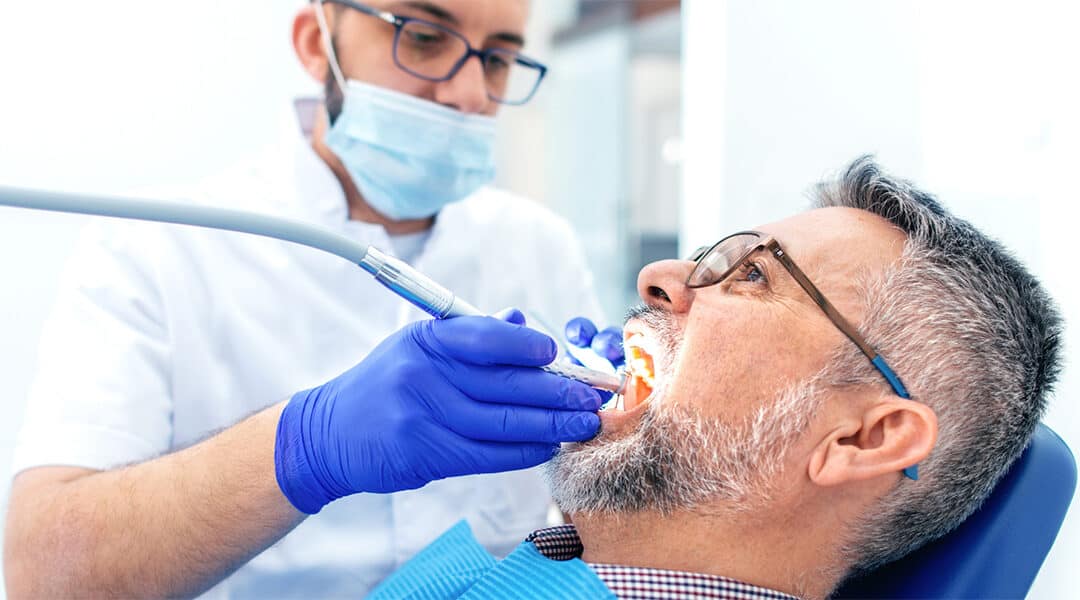Oral cancer is a steadily growing threat that impacts millions of lives across the world, with nearly half of cases resulting in death.1 Current estimates report that one in 60 men and one in 141 women in the U.S. will develop oral cancer during their lifetimes.2 Despite the increasing risk, providers are still poorly equipped to find and diagnose early stages of the disease.
The challenges of early detection are multi-faceted — especially with the lack of consistently accurate screening methods — but the first step to an early oral cancer diagnosis lies in the quality of communication between patients and providers. Before making the decision to investigate potential malignancies, providers must first know that patients may be at risk for developing the disease. This begins with a regular evaluation of a patient’s early-stage signs and symptoms, as well as certain factors that are well-understood to increase oral cancer risk.
Understanding Clinical Risk Factors
Routine dental check-ups should always include a discussion about a patient’s lifestyle, as many behaviors and habits can harm oral health and lead to oral cancer. Key factors to monitor include:
Tobacco. Cigars, cigarettes, and smokeless tobacco are known carcinogens and have been shown to facilitate a tumor microenvironment in the oral cavity. On average, smokers are ten times more likely to develop oral cancer compared to nonsmokers — this risk multiplies exponentially with regular alcohol use.4 Moreover, decades of smokeless tobacco use can increase oral cancer risk by up to 50 times.5
Alcohol. Alcohol consumption is also recognized as a primary causal factor of oral cancer. Studies suggest that alcohol works in tandem with other lifestyle factors, mainly tobacco use, to promote and sustain cancer progression.3 As a result, patients who use both alcohol and tobacco increase their risk of oral cancer by five times, with heavy alcohol consumption linked to a 30-fold increased risk.6
Age and Gender. Oral cancer can develop in patients of any age, but approximately 4 out of 5 cases occur in patients above 55.2 Likewise, men are more than twice as likely to develop oral cancer than women, possibly due to more frequent tobacco and alcohol consumption.2
Potential Risk Factors. Additional lifestyle habits and factors tied to oral cancer include second-hand smoke, immunodeficiency, oral lichen planus, gastroesophageal reflux disease (GERD), and occupational exposures to carcinogens.
Identifying Symptoms
Even if patients have minimal to no risk factors, providers should always use routine evaluations to ask about and look for signposts of oral cancer, such as:
- Non-healing mouth sores lasting longer than three weeks (with or without pain)
- Unexplained red or white patches
- Lump or thickening in the neck, mouth, or throat
- Sense of something stuck in throat
- Sore throat
- Difficulty swallowing
- Ear pain
- Bad breath
- Changes in voice or speech
- Poorly fitting dentures or other teeth problems
The key to early oral cancer detection is to incorporate proactive screenings, including risk factor and symptom assessment, into each routine dental check-up. To help accelerate detection, Vigilant Biosciences®® is developing next-generation technology that helps providers accurately determine each patient’s risk to make informed treatment decisions.
Sources
1. Oral health. (2023, March 14). World Health Organization. https://www.who.int/news-room/fact-sheets/detail/oral-health
2. Key Statistics for Oral Cavity and Oropharyngeal Cancers. (2023, January 18). American Cancer Society. https://www.cancer.org/cancer/types/oral-cavity-and-oropharyngeal-cancer/about/key-statistics.html
3. Irani, S. (2020). New Insights into Oral Cancer-Risk Factors and Prevention: A Review of Literature. International Journal of Preventive Medicine 11, 202.
4. Oral Cancer and Tobacco. (n.d.). Johns Hopkins Medicine. Retrieved August 7, 2023, from https://www.hopkinsmedicine.org/health/conditions-and-diseases/oral-cancer-and-tobacco
5. Risk Factors. (n.d.). Oral Cancer Foundation. Retrieved August 7, 2023, from https://oralcancerfoundation.org/cdc/risk-factors/
6. World Cancer Day: know the facts – tobacco and alcohol both cause cancer. (2021, February 3). World Health Organization. https://www.who.int/europe/news/item/03-02-2021-world-cancer-day-know-the-facts-tobacco-and-alcohol-both-cause-cancer
